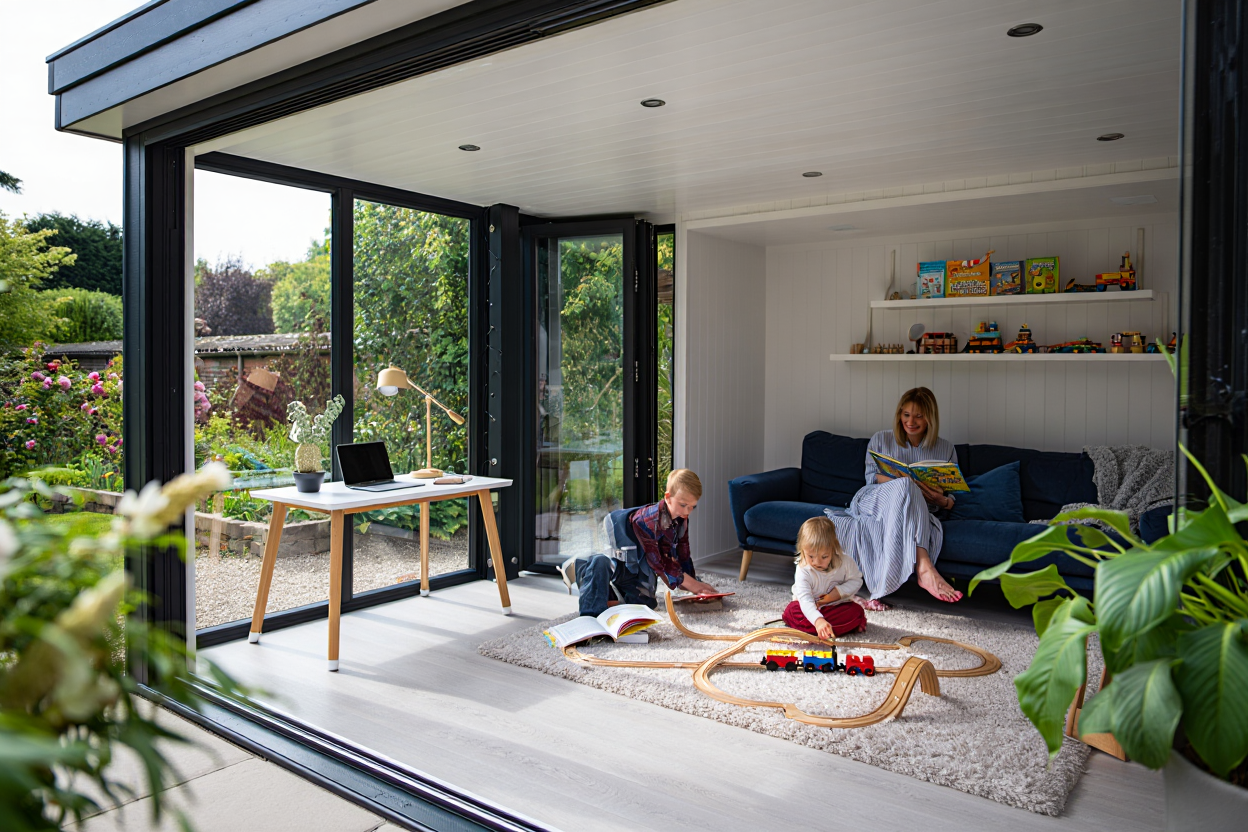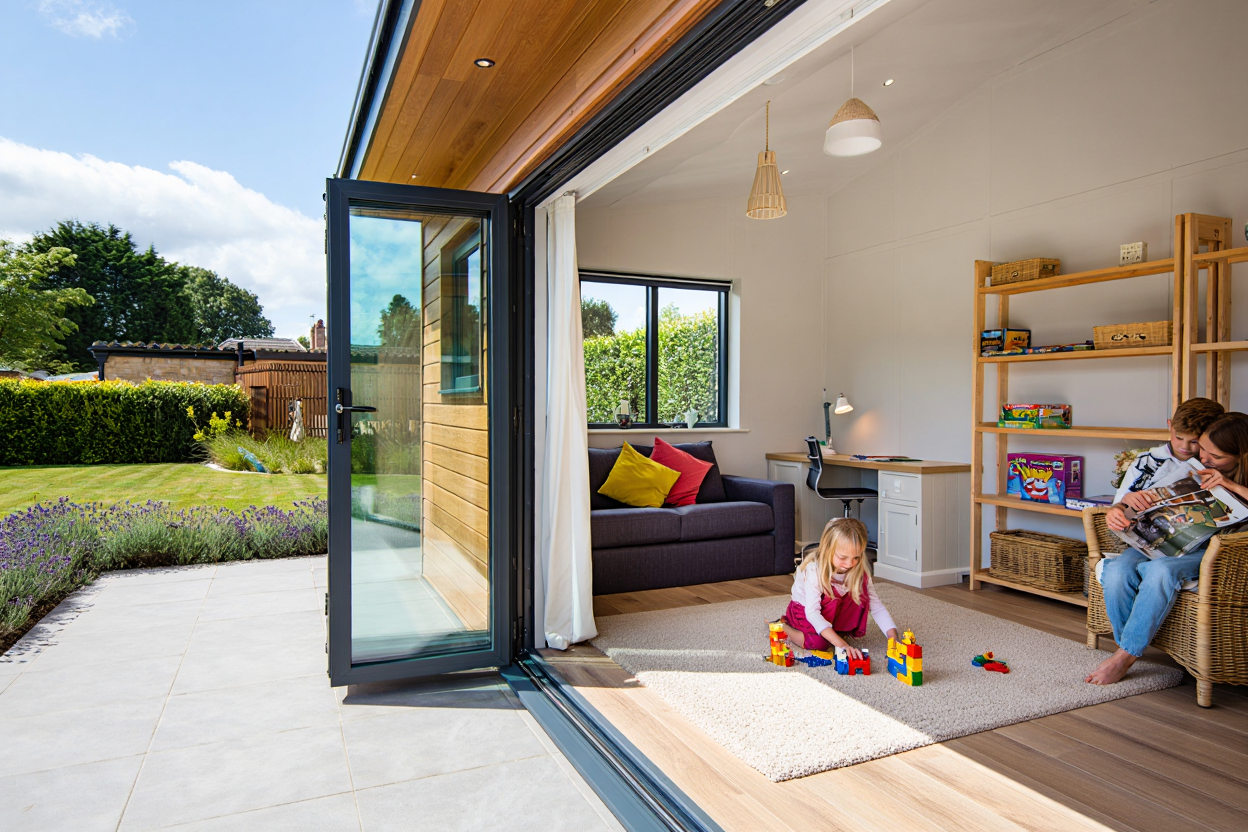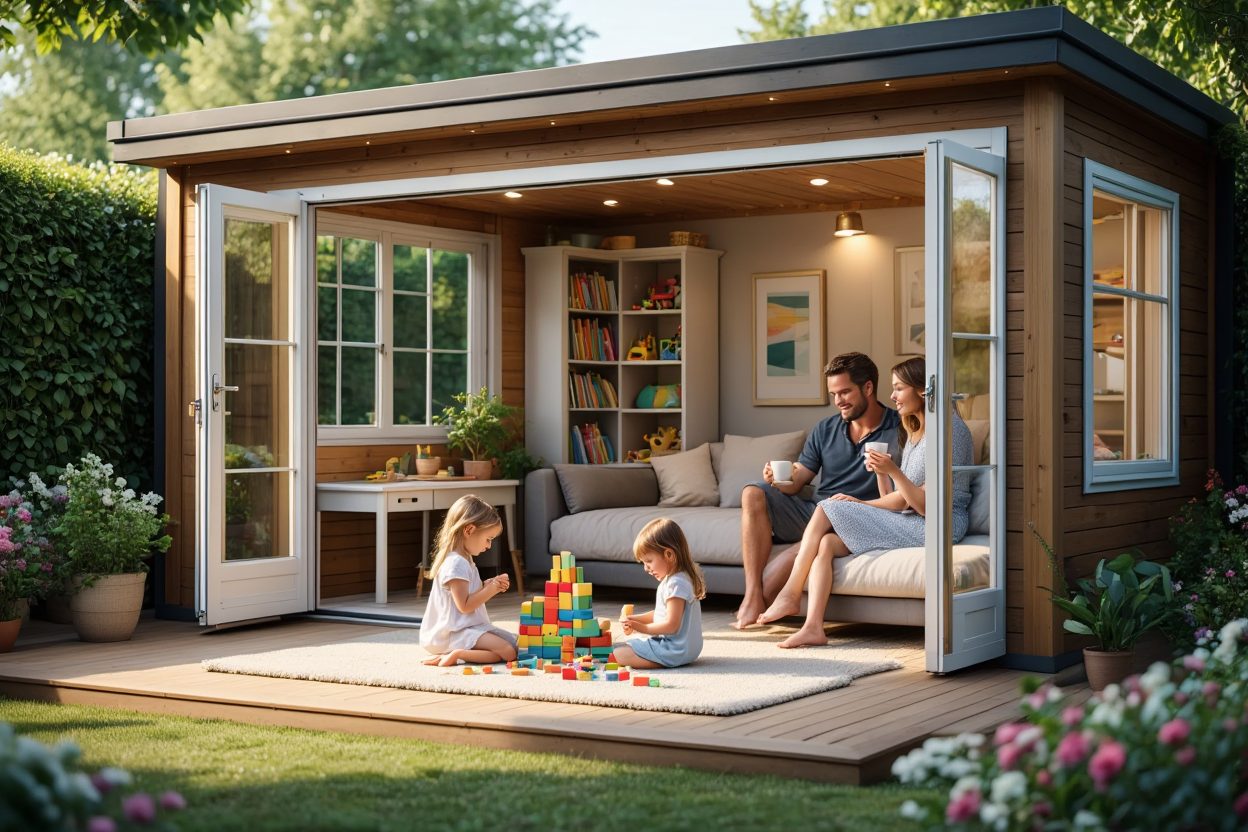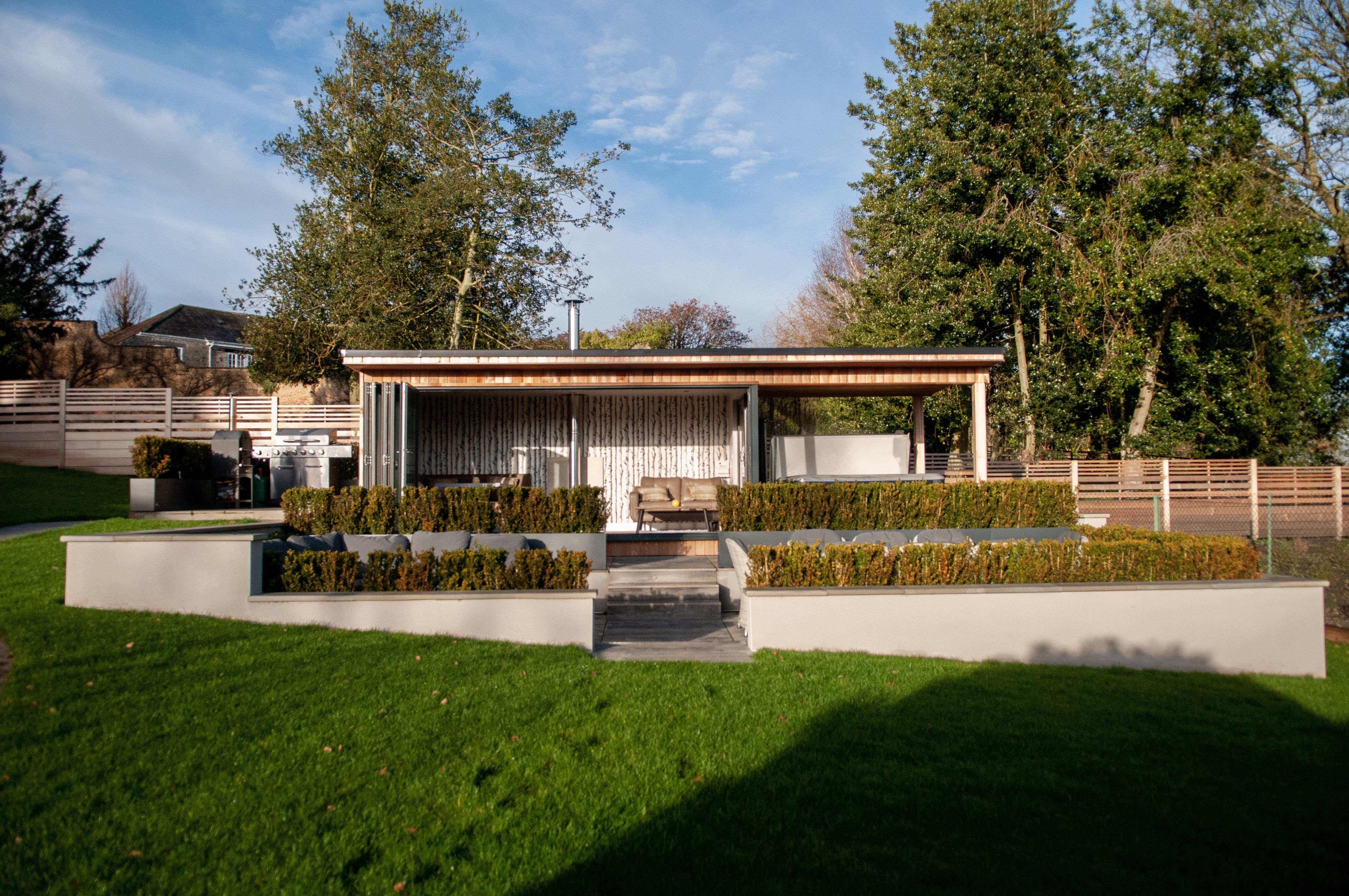Garden Room Mistakes to Avoid: What to Know Before You Buy
Adding a garden room is a great way to get more usable space at home. But not all builds are equal — and rushing the process can lead to issues that are expensive or awkward to fix later.
Before you commit, it helps to know what people often overlook. Here are the most common mistakes we see (and help fix) — plus how to avoid them.
1. Rushing the Design
It's easy to get carried away once you’ve made the decision to buy. But jumping into the build without thinking it through is one of the most common mistakes.
People often choose a layout or shape without considering how they’ll use the space day to day. The result? Doors or windows in the wrong place. No space for furniture. A view blocked by a wall.
Plan the layout before signing anything. Think about where your desk or seating will go. Which way the sun hits. How the doors open. This helps avoid costly changes later.
2. Underestimating the Need for Insulation
Some garden rooms look nice on the outside but aren’t built for real use. Thin walls, poor insulation and no heating mean it’s too cold in winter and too warm in summer.
If you’re planning to use the space as an office, guest room, or anything beyond summer seating, proper insulation is essential.
Ask what insulation is included in the walls, floor and roof. Double glazing should come as standard. Without this, your garden room becomes seasonal — not year-round.
3. Picking the Wrong Size
Going too small or too big are both common.
Too small and you’ll outgrow it quickly. A simple desk setup might feel cramped the moment you add storage or extra seating.
Too big and it may dominate your garden, or come with extra costs for groundwork and planning.
Mark out the size in your garden before committing. Step inside the footprint and imagine moving around. Can you open doors? Fit in furniture? Stand back and see how it fits with the rest of the space.



4. Forgetting About Power, Lighting and Internet
A room without electricity isn’t very useful. You’ll want lights, plugs, and Wi-Fi at the very least.
Planning these early helps avoid disruption. Add sockets where you’ll need them — by the desk, near the TV, or beside the sofa.
You may also want outdoor lighting or power for heaters.
Running power and internet to the garden room often needs a qualified installer. It’s best to factor this into the initial quote or prepare for it as a separate job.
5. Overlooking Heating and Ventilation
Even a well-insulated room needs temperature control.
You don’t want to be freezing in January or sweltering in July.
Plan for electric heating or underfloor heating at the start. Consider ventilation for airflow — especially if you’re working out, painting, or just using the room for longer periods.
Roof vents, opening windows or a small fan system can make a big difference.
6. Ignoring How You'll Use It Long-Term
What you want today might change in two years.
Many people start with a home office, then want it to double as a guest space, hobby room, or even an extra bedroom.
Leave some flexibility in the layout. Consider built-in storage or a fold-out bed. A bit of extra wiring now makes it easier to add tech or features later.
Think beyond the immediate use. This is an investment, so plan for your future self.
7. Using the Wrong Materials
Cheap materials can mean higher costs later.
Timber cladding that warps, single-pane windows that mist, poor roof seals that let in water — these are things we’ve seen when rushed decisions are made.
Look for durable, low-maintenance materials suited to UK weather. Ask what guarantee is offered. Find out what upkeep is needed and how long components should last.
A room that needs repainting or patching every winter isn’t saving you anything.

8. Skipping Planning Permission Checks
Most garden rooms fall under permitted development — but not all.
If you live in a conservation area, have a listed building, or want to build over a certain height, you may need to get approval.
Skipping this can lead to stress and fines. Some companies will help you check this — others won’t mention it.
Always confirm what applies to your property before committing.
9. Not Thinking About Access
If your garden is hard to access, this can delay or complicate the build.
Tight alleyways, steep drops, or shared pathways need careful planning.
Let your installer know early if access is limited. It can affect delivery, installation method and even what design options are possible.
Better to plan around it than face delays once work has begun.
10. Choosing the Wrong Installer
Finally, the biggest mistake of all — picking a team that cuts corners.
Look for experience, good reviews, and clear communication. Ask to see previous projects or speak to a past customer.
If a quote is far cheaper than everyone else, ask why. Are they using lower-quality materials? Is the insulation missing?
The right installer will guide you through decisions, explain the process clearly, and be upfront about costs.
Need advice or a second opinion before buying?
We help homeowners across London plan, design, and install garden rooms that actually work.
Speak to our team or request a free quote today:
https://nationalhomeandgarden.co.uk/contact?quote
Or call us on 020 8103 9484.